PM Modi on 3-day visit to 3 states–MP, Bihar, Assam–from Sunday
According to the Prime Minister’s Office (PMO), the Prime Minister will visit Madhya Pradesh, Bihar and Assam from February 23-25.
The tribal dance forms of Assam were showcased in all their colourful glory in Kolkata.
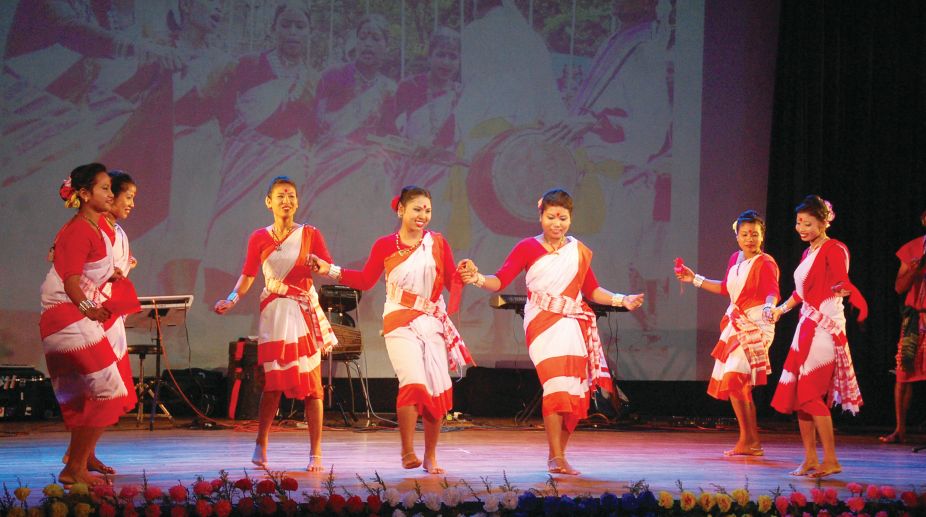
Jhumur dance.
Assam has a rich cultural tradition of tribal, folk and classical dance forms. People in Kolkata recently had a brief glimpse into this heritage due to the far-sightedness of The Assam Socio and Literary club with Manipuri dance exponent and a connoisseur of the arts — a student of Guru Amubi Singh — Debjani Chaliha as its president.
The evening of Rongali Bihu was held to celebrate the Assamese New Year. A galaxy of dancers well-versed in the indigenous folk forms of Assam presented an evening of delightful dances, which had never been showcased here before.
Advertisement
The Tiwa tribe who inhabit the plain as well as the hilly regions of the Assam valley break into joyful expressional dances during festivals. The New Year festival calls for merry-making because it ushers in the season of spring as well, when moods are elevated.
Advertisement
Spring with its plethora of bright colours doesn’t go unnoticed by nature and of course, the people. Tiwa was the inaugural dance, which made spirits soar high. As audience expectations rose, we saw gem after gem of Assam’s tribal and folk dances follow in quick succession, spreading spring’s happiness.
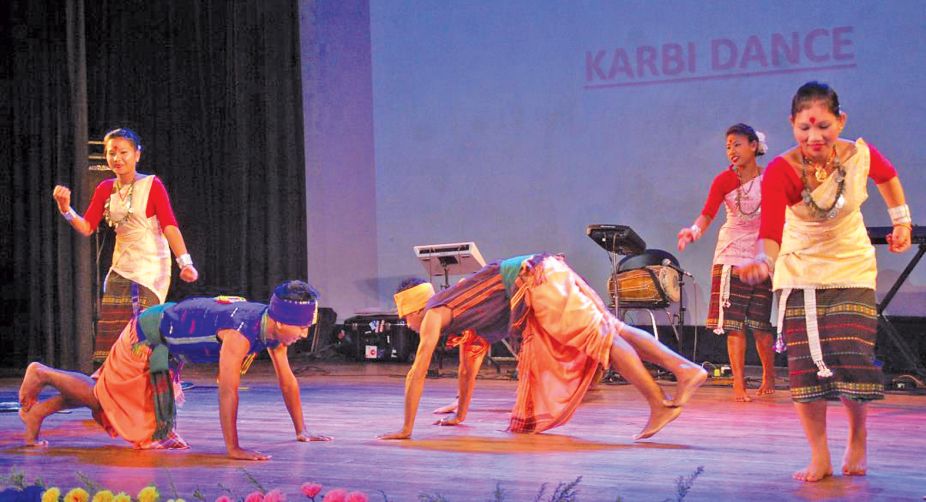
Bagarumba — the main traditional dance of the Bodo tribe — has been passed on from generation to generation, so much so that the music too speaks of their ancient Chinese influence.
They danced gleefully to the accompaniment of Kham, a flute-like instrument made of wood and goat skin; gongwana, an instrument consisting of reeds and made of wood.
The pepa, a horn, was used in all the dances. Mohor Singha, which is a buffalo horn, is something unique and it was also used as a part of the ensemble.
Things of nature are the popular subject matter of their dances and the one performed dealt with the activities of the butterfly.
The popular Jhumur is usually performed by the tea tribe community, which Assam abounds in. The tea tribes or the Cha jonojati have undergone forced migration from many other communities by the British. They happen to be one of the most backward and exploited socio-economic groups.
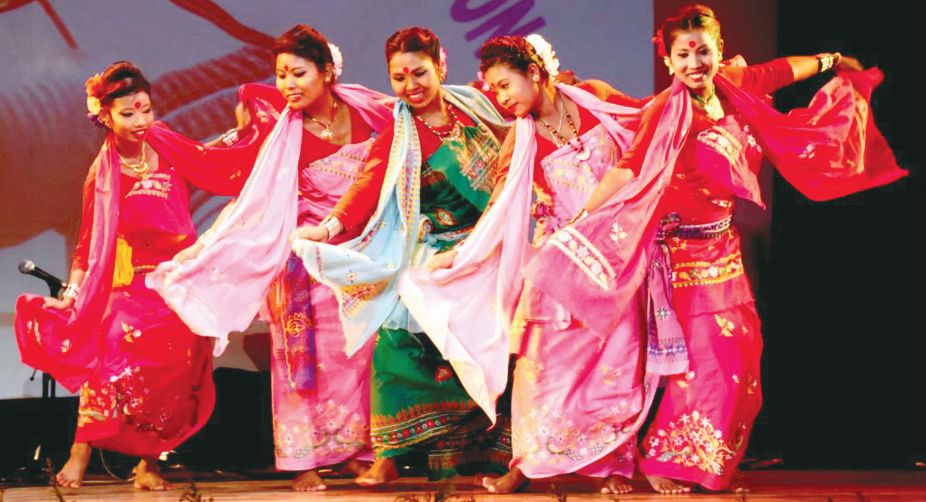
Jhumur dance therefore is common to many other tribes in different parts of India. Like all other tribal and folk dances, it is collectively performed to express the joys of their very mundane and hard life.
They make use of indigenous musical instruments. Jhumur dancers tightly clasped each other’s waists while rendering brisk footwork with precision. The simple rhythm of their movements was catchy and enjoyable.
The Rabha community like all other tribal and folk communities dance and sing to celebrate their festivals. As they are an agrarian society, their most important festival is the harvest festival, nonetheless, the spring festival during which time they celebrate their new year is equally important.
Rishi is their most important male deity while worship of Shiva is also prevalent in some form or the other. Their dance of joy and happiness was welcomed too.
It was a priceless opportunity to witness the rich multi-coloured culture of the Karbis. They are of Tibeto-Burmese origin. Their sense of perfect rhythm, not missing even half a beat of the drum, was a pleasure to watch.
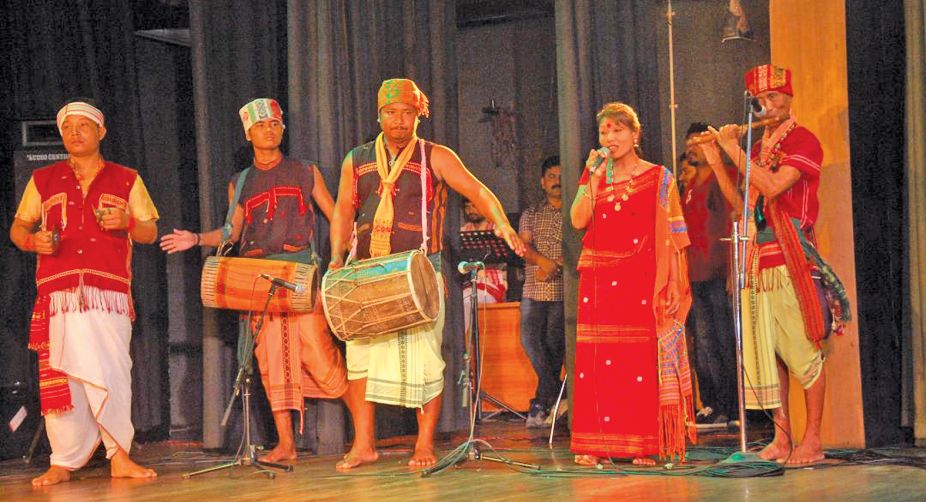
It is their practice to perform Domahi Kikang during the season of spring when Assam celebrates its new year and that is what they exactly did. Varied are the customs, tradition and practices of these tribal groups living in different parts of Assam, yet we see a common thread that runs through them.
Bihu dance is something, which we in a limited way are familiar with, but the other forms that we saw were added rewards. The evening came to a close with the performance of Rongali Bihu, which is also known as Bohag Bihu, celebrated during Assamese New Year.
Clad in mekhela and riha, made of the rich and much sought after silk of Assam and suitably bejewelled, women and girls entered the stage, making perfectly synchronised circular movements, moving their hips, arms and wrists to the strains of Bihu music. It was sheer visual delight as the movements were aesthetically rendered.
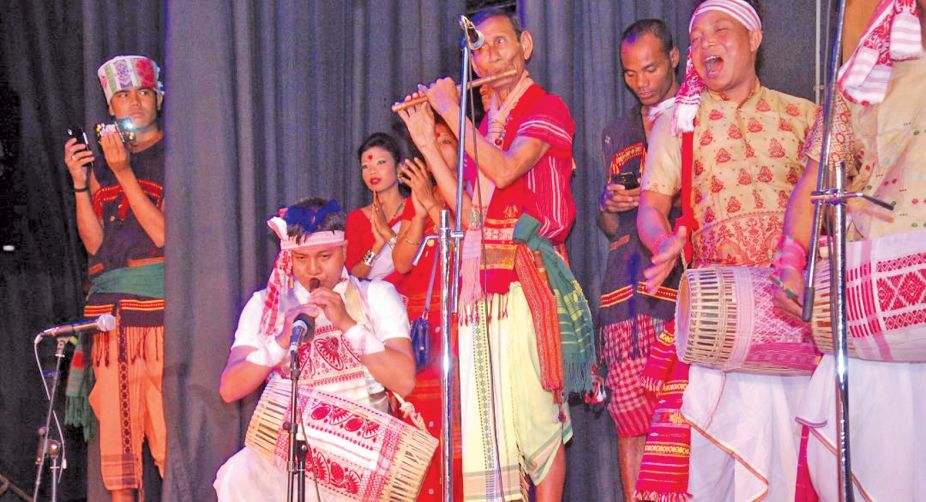
Bihu is of as much importance to the Assamese people as Durga Puja is to Bengalis. It is interesting to note that Bihu has its roots in a certain fertility cult of ancient times, which is reflected in the erotic and seductive movements of the dance form.
The dance is accompanied by spontaneous hand clapping and the quick rhythm change is noticeable. The Assamese head gear called jaapis is used in this dance.
At the end of it all the audience’s cup of rasa was fulfilled. Jayashri Deka, who organised the event alongside Sanskriti Dol, regaled everyone with her singing. The Satyajit Ray Auditorium of ICCR hosted the evening.
Advertisement